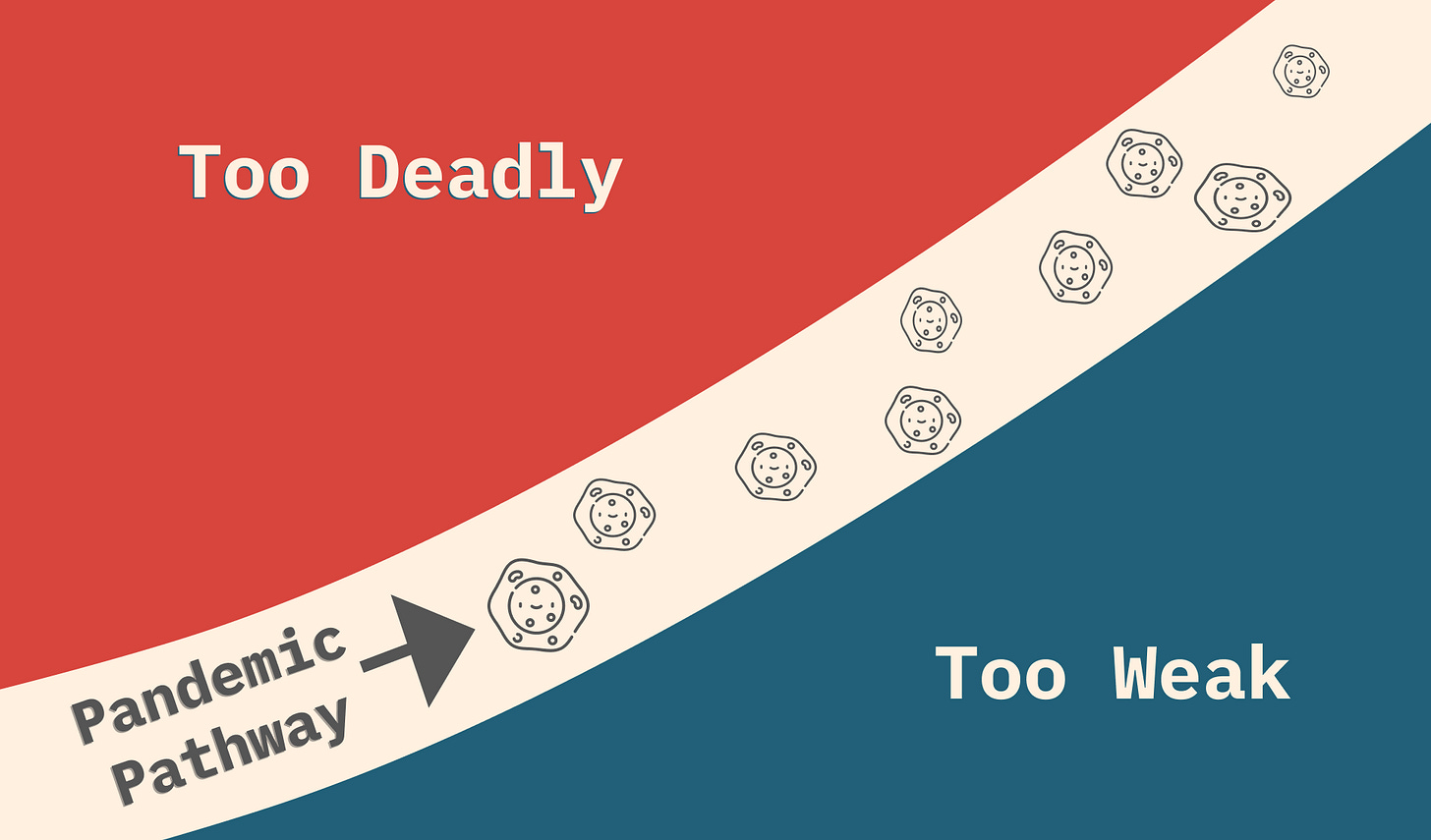Viruses explained in exactly 500 words
I've had the personal misfortune of experiencing two very different viruses in 2020.
One attacked my computer. The other made me spend a fortnight in isolation.
In today's issue, I'm going to explore the latter.
What is a virus?
A virus is a tiny parasite made up of genetic material and surrounded by a protein shell and lipid membrane.
Scientists have discovered over 2,000 unique viruses that have a total population greater than the number of stars in the universe by a factor of 100 million (if you're wondering what the number is – it's 10 Nonillion).
Viruses are so common that there's a chance you've inhaled a few since you started reading this article. Lucky for you, only 10% of them infect humans.
A Not-So-Fun-Fact
Sometimes, two harmless viruses infect a single cell in an animal, and their genetic materials combine to form a virus that could infect humans.
This is likely how Sars-Cov-2 came to be.What do viruses do?
Just like other parasites, viruses depend on a host for survival. They invade cells and use their resources to make copies of themselves.
There are two tactics that viruses use to multiply:
The slow and steady: Some viruses integrate their genetic material with that of their host cell. As the host cell creates copies of itself, the virus' genetic material gets copied as well.
The spray and pray: Some viruses multiply within a host cell, causing it to burst open and send viral particles to other host cells in the vicinity.
This multiplication of viral particles continues till the host either dies or manages to defeat the virus.
Often, before the host's death or recovery, the virus is transmitted to a new host, where the entire process of multiplication repeats itself.
If this cycle goes unchecked for too long, countries get locked down, and humans spend Thanksgiving alone.
Good luck finishing that Turkey by yourself.
What makes a virus successful?
If a virus's success is defined by the number of copies it makes, then the most successful viruses are not the deadliest.
A deadly virus would kill a host before transmitting itself to another host, thus shooting itself in the foot.
Successful viruses tread the delicate path between being strong enough to overcome a host's immune system and being weak enough to not kill the host before transmission.
We’re just like them.
Of late, viruses have been getting a lot of flak for the trouble they’re causing.
But after all, aren't we just like them?
Hear me out.
We've survived for millennia by treading the path between exploiting the earth's resources (bypassing our host's immune system) and allowing them to regenerate (keeping our host alive).
But what if we cross that boundary and over-exploit our host till it is unable to sustain us (i.e. dies)?
Or what if our host gets hit by an asteroid (i.e. murdered)?
What would we do?
Well, we’d have to find a new host.
Don’t worry though, Elon has it figured out.
That’s it for this week.
Next week, I’m going to be exploring the science of sleep.
If you enjoyed this issue, could you do me a favor & share it with another person?








Brilliant. I love it.
this is already my favourite newsletter! and i just signed up! glad you're doing better. :)